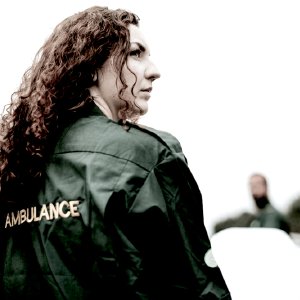What Is the Average Age of Someone Who Dies from a Drug Overdose?

There are few things more tragic than having to bury a child, but as a result of the growing drug and alcohol addiction epidemic, more Americans are dying long before their time, and long before their parents. That is because drug and alcohol addiction is a lethal crisis of both the mind and body, and it tends to hit hardest among younger adult demographics.
Case in point, one of the particularly saddening factors of addiction is that, when people do die from drugs and alcohol, they tend to die younger than we might think. How is it that the demographic most likely to die from a drug overdose happens to be the age group that is generally speaking healthiest, that is in the prime of their life?
The Age Group Most Likely to Die from a Drug Overdose
The age group most likely to die from a drug overdose is adults between the ages of 25 and 34. This fact pans out in virtually every state. Sadly, people are most likely to die from drugs when they are in their young adult years.
And here’s another way to look at this. The life expectancy of a drug addict is not encouraging. As soon as one begins using drugs, their prospects for a long and healthy life are sorely diminished. Add to that the fact that today’s drugs are more potent and dangerous than ever before, and the prospects for survival for an addict become sorely reduced.
Other factors play a role in why drug deaths occur the most among 25 to 34-year-olds, such as a tendency towards higher risk-taking for this age group, more susceptibility to peer pressure, higher chances of exposure to other drug users, less awareness of the risks involved in drug use, etc.
What Does it Mean When a Person Dies Long Before Their Time?

While any death is tragic, there is a particular type of heartbreak in a death that occurs long before it should. There is a sense of a robbery, a feeling that something has been taken from us long before it should have been.
And that’s just one gruesome effect of a premature death. There are other factors to consider when someone dies in the prime of their life, like:
- American life expectancy. One of the primary reasons why American life expectancy receded in 2015, 2016, and 2017 is the stark increase in fatal overdoses among a relatively younger adult demographic.
- Children left without a primary caregiver. When someone dies from a drug overdose in their late twenties or early 30s, they may be leaving young children without a parent. The children will have to be cared for by someone else; grandparents, aunts, uncles, godparents, or foster parents, to name a few.
- Aging parents left without support from adult children. Another harmful effect of an addict dying in their late 20s or early 30s is they often leave behind aging parents who relied on their adult children for some means of support (and who will likely need even more support in the future).
- Loss of productivity within the workforce. One of the most underreported and underrated costs of overdose deaths in America is the sheer harm it has on the workforce. When someone dies in their prime working years, the loss of production within the workforce is tangible. But when this happens to tens of thousands of working-age Americans every year? The effect is exceptionally harsh.
Drug and Alcohol Addiction – One of the Nation’s Most Lethal Heath Problems
According to the Centers for Disease Control and Prevention and their preliminary report for 2019, approximately 70,980 people died from drug overdoses. The data has not been fully verified yet, but that is the preliminary report. (The findings were also corroborated and published by the American Hospital Association).
If the CDC reporting is accurate, then 2019 brought the worst drug-related death toll the United States has experienced yet (or at least since reporting of such deaths began). With so many of these deaths occurring among young adults, it’s concerning to consider what the future might hold for us. From life expectancy to children growing up without parents, lack of a trained workforce to meet the growing needs of the economy, losing tens of thousands of young adult lives every year has far-reaching consequences.
The Crucial Nature of Addiction Treatment
Though prospects may seem poor and the future bleak at this time, there is a way to halt the U.S. drug crisis’s progressive advancement and its resulting death toll. Drug and alcohol rehab centers exist to halt the dwindling spiral of addiction and help recovering addicts get their lives back.
With the help of a treatment center, a recovering addict can finally address their physical dependence on substances and the underlying mental, emotional, spiritual, and deeply personal reasons why they began using drugs in the first place. Addressing all of the above is critical, as not fully tackling every aspect of one’s addiction opens the risk to relapse later on in life. Drug rehab centers offer comprehensive services to ensure that no stone is left unturned in one’s quest for a lifetime of freedom from drugs and alcohol.
While it is next to impossible to overcome addiction on one’s own, addiction is treatable. Addiction does not have to be a permanent crisis or a death sentence. If someone you care about is struggling with an addiction to drugs or alcohol, please contact Narconon today. Don’t let this be the last chapter in their story.
Sources:
- https://www.kff.org/other/state-indicator/opioid-overdose-deaths-by-age-group/
- https://www.pbs.org/newshour/health/american-life-expectancy-has-dropped-again-heres-why
- https://www.cdc.gov/nchs/nvss/vsrr/drug-overdose-data.htm
- https://www.aha.org/news/headline/2020-07-16-cdc-drug-overdose-deaths-46-2019


 ®
®